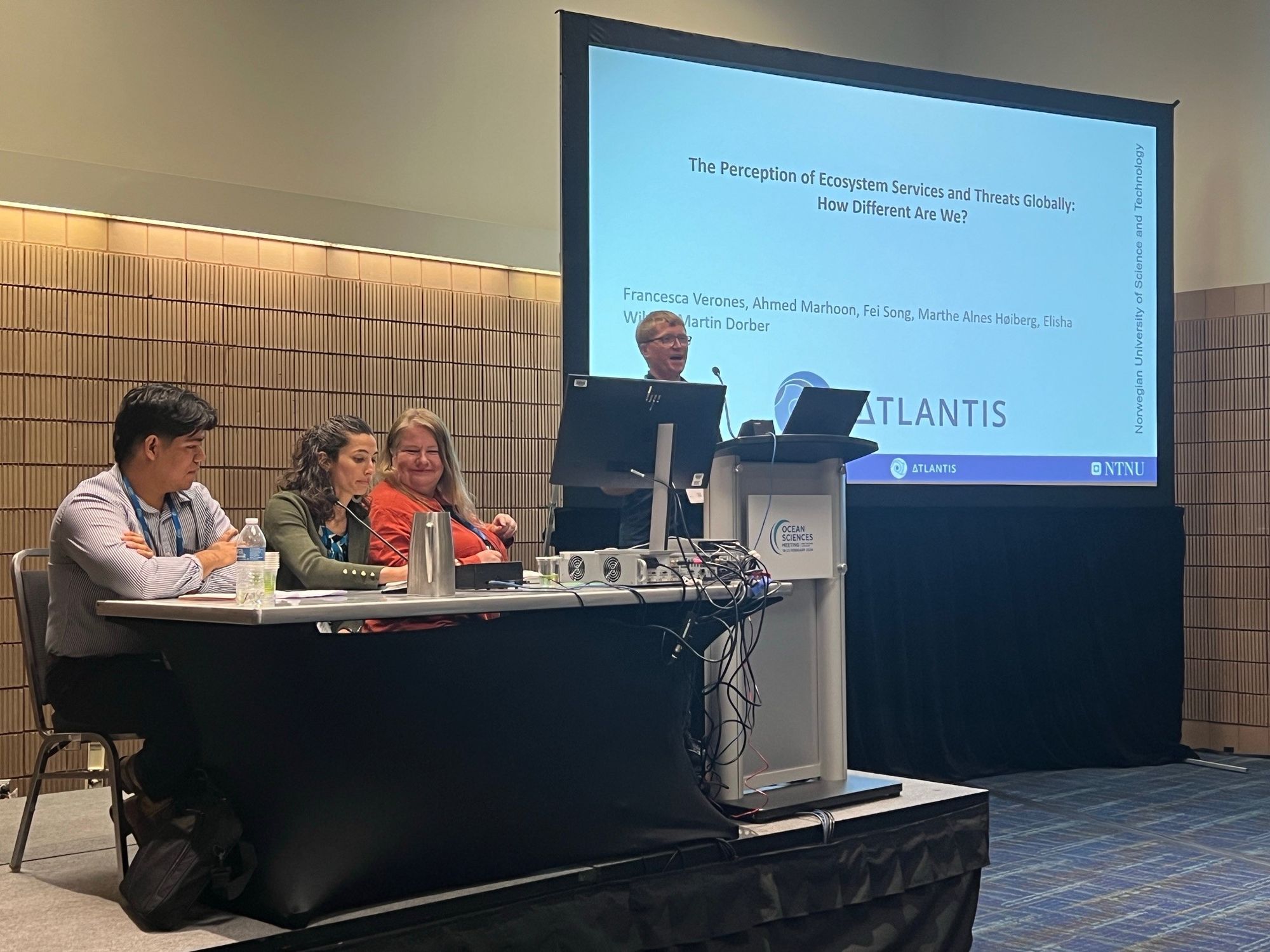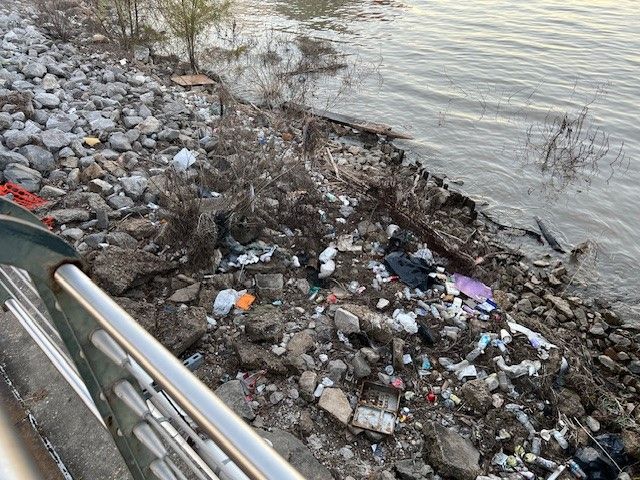Ocean Sciences Meeting 2024

Every two years, the Ocean Sciences Meeting, co-sponsored by the American Geophysical Union, the Association for the Sciences of Limnology and Oceanography (ASLO), and The Oceanography Society (TOS), brings together the ocean community to exchange findings, foster connections among scientists worldwide, and advance the impact of science.

The Ocean Sciences Meeting 2024 (#OSM24) took place in New Orleans, Louisiana, from February 18th to 23rd, 2024, where I had the opportunity to represent the ATLANTIS project among nearly 6000 attendees.
I successfully proposed and moderated a session titled” “Toward a Sustainable Ocean: Holistic Tools, Transdisciplinary Approaches, and the Next Generation of Ocean Solutionists”, together with Stephanie Sharuga (Bureau of Ocean Energy Management) and Carlie Wiener (Schmidt Ocean Institute). Initially I had a poster in this session titled “Sustainable consumption and production: “Integrating "Whales, Waste and Sea Walnuts” into Life Cycle Assessment”, but due to some last-minute dropouts, I was additionally permitted to present it in the oral session.

Furthermore, Francesca Verones had an oral presentation for her abstract titled "The Perception of Ecosystem Services and Threats Globally: How Different Are We?" I stepped in on her behalf and used the opportunity to share the latest ATLANTIS results with the community. In summary, the ATLANTIS project gained significant visibility and attention, leading to new collaboration opportunities and challenging questions on how to connect the results to a broader audience.

Now, let's dive deeper into what I am taking away from the conference for both myself and the ATLANTIS project.
The conference started with a planetary session, highlighting environmental injustice at the Mississippi River, also known under the nickname “cancer alley”. Although slavery in the agricultural field has ceased, it has been replaced by chemical factories polluting its surroundings. This was impressively reinforced by stories from the residents. It served as a good reminder that every quantifiable number of our models is grounded in real consequences and that environmental decision-making needs to consider various factors at the same time, such as biodiversity and social consequences.

Another key takeaway was the omnipresence of AI and cloud computing. NASA presented its podaac database for sharing remote sensing data and discussed new satellite missions on the horizon. With the abundance of available data, cloud computing becomes essential for processing, leaving only the final results as output on local computers. Integrating this data with citizen science and AI will greatly increase data and knowledge availability, particularly regarding species presence data. Examples include detecting species in videos from autonomous vehicles, conducting wildlife surveys from planes using AI algorithms in tandem to provide results before landing, and automatically identifying all species in seabed images. This all provides new input data for more sophisticated impact models. Concurrently, Environmental DNA is rapidly advancing in the marine sector. Could all these developments soon enable us to model impacts on a monthly scale?
Moreover, many presentations reminded me that impacts can vary significantly depending on the life stage of a species. For instance, during the construction of offshore wind farms, juvenile fish appear to be more sensitive to noise impacts than adults. Additionally, studies have shown that ingestion impacts for turtles vary by species. While one turtle species predominantly ingests white plastic, despite not preying on jellyfish, another species primarily ingests red plastic.
Additionally, numerous presentations focused on plastic research. One significant question still remains: How exactly does plastic flow through the ocean after being improperly managed? It's reassuring to see that the ATLANTIS project, particularly the work of Marthe Alnes Høiberg, is addressing this research question by developing a global Macroplastic fate model.
What we understand is that plastic accumulation continues unabated, both in the ocean plastic gyres and in coastal regions. What's alarming is the rapid pace at which this is occurring. Several presentations highlighted that these rates are not currently linear but closer to exponential. This underscores the urgency for decision-making regarding plastic and underscores the importance of the models being developed in ATLANTIS.


